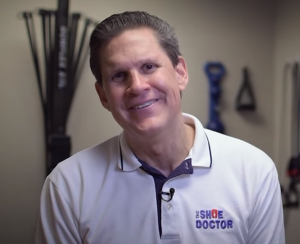Key Takeaways
- Plantar fasciitis healing times depend on many factors, including severity, treatments used, and lifestyle habits.
- Orthotics are essential in fixing biomechanical problems, alleviating plantar fascia tension, and distributing pressure to ease pain and improve foot functionality.
- Custom orthotic solutions tend to provide more effective and long-term relief than generic inserts, particularly if you have unique foot structures and severe symptoms.
- A comprehensive strategy incorporating orthotics, supportive shoes, adjunct therapies, and lifestyle modifications is key for both healing and avoiding flare-ups.
- Getting the most out of your orthotics requires a slow break-in period, good fit, and daily usage, with ongoing oversight and adjustment from a professional.
- Frequent follow-up with doctors allows for necessary modifications and up-to-date treatments.
Healing plantar fasciitis with orthotics involves the use of shoe inserts to reduce heel pain and aid in foot recovery. Orthotics provide consistent support beneath the arch, which distributes pressure more evenly and can reduce inflammation. Podiatrists often recommend orthotics to their patients with plantar fasciitis as they provide support to your feet and keep your feet properly aligned when walking to reduce pain. Soft padding in a few inserts can introduce a comfort factor for aching feet. Orthotics can be anything from store-bought to custom models crafted by a doctor. Choosing the right one depends on foot shape, daily habits, and severity of pain. To demonstrate orthotics in real life, the following section will discuss what constitutes a quality insert and how to apply it daily.
How Plantar Fasciitis Heals Over Time
We’ve already learned that healing from plantar fasciitis is neither quick nor easy. It is, in fact, a process, with different stages demanding different tactics and patience. It can take anywhere from six to twelve months, sometimes up to eighteen. Though the majority of people get better within a few months, your mileage may vary based on severity, treatment choices, and daily habits.
1. Initial Relief
Short-term pain relief is key in the beginning. Orthotic insoles and gel heel pads are usually the go-to. They pad the heel and relieve tension on the plantar fascia.
Ice packs and anti-inflammatory drugs help reduce swelling and pain. Easy stretches (like rolling your foot over a cold bottle) loosen the fascia. Night splints might assist, maintaining the ankle in a neutral position and reducing stabbing pain upon waking up.
2. Substantial Improvement
Patients typically experience reduced pain and improved foot function within weeks of consistent treatment. Custom orthotics can provide specifically targeted arch support and adjust foot pronation at this point.
Increased activity is safer if pain remains low, but be vigilant for setbacks. A consistent regimen of stretching and strengthening exercises, such as calf stretches or toe curls, bolsters the healing tissue and prevents symptoms from lingering.
Those monitoring pain with just a 0–10 scale would be better able to make informed decisions about activity and treatment modifications.
3. Full Recovery
The primary objective is to heal the foot to full function again. Supportive shoes and orthotics should be a way of life, even after the pain subsides, to avoid a relapse.
Frequent check-ins with a health provider aid in catching early indicators of trouble. Educating yourself on basic daily foot care—such as steering clear of hard floors barefoot—keeps healing on course and decreases the chances of flare-ups.
4. Influencing Factors
Your foot structure and activity level inform your healing timeline. Good shoes, and a bit of daily TLC, like warm-ups and not standing too long, go a long, long way.
Physical therapy and orthotics work well for most people. Just five percent require surgery, demonstrating that conservative care is effective in most cases.
Underlying problems, such as arthritis, can decelerate and require additional assistance.

How Orthotic Support Speeds Up Plantar Fasciitis Recovery
Orthotics are central to treating plantar fasciitis by correcting foot mechanics, reducing stress on the plantar fascia, distributing pressure, and providing personalized options. For instance, both custom and prefabricated orthotics are worn globally, and each comes with advantages for varying demands.
Correcting Biomechanics
Orthotics assist in correcting the foot mechanics by providing support to the heel and arch. As we discussed earlier, most patients with plantar fasciitis have either flat feet or very high arches, which alter their gait and place an undue amount of force on the plantar fascia.
Off-the-shelf or custom orthotics can be crafted to either lift the arch or pad the heel, allowing for improved foot mechanics and reduced strain. By keeping the foot in a good position, orthotics help to correct any abnormal pronation or supination, which tends to be present in people who have this condition. Changes in foot motion are observable within a few weeks, which assists in monitoring progress and adjusting the device as necessary.
Reducing Fascia Strain
Orthotics help by reducing the tension on the plantar fascia while you are walking or standing. Most also include soft padding that absorbs shock, so the tissue can heal with less pain.
Others use stretching and strengthening with the aid of orthotics. This combination can not only decrease symptoms and short-term issues, but also decrease the risk of long-term issues. Research suggests that custom and prefabricated orthotics can reduce pain and inflammation in as little as 4–6 weeks, but the change in pain may not be significantly greater than with placebo devices.
Distributing Pressure
Orthotics are constructed to distribute weight across the foot, so one part doesn’t absorb the entire burden. That goes a long way towards pain relief for plantar fasciitis sufferers, particularly for heel pain.
Soft, shock-absorbing materials provide comfort and reduce pain during walking. It’s key to check that orthotics fit right — a bad fit can lead to new pain or blisters. Custom orthotics fit the shape of each foot better, but research indicates that inexpensive, off-the-shelf orthotics typically provide similar outcomes for pain and function.
Personalized Solutions
Orthotics need to be suited to your foot type and activity level. Custom orthotics tend to last longer but are more expensive, and over-the-counter ones are less expensive and work great for many people, but the support tends to wear out quickly.
The Holistic Healing Approach
To heal plantar fasciitis is to do more than just treat foot pain. The holistic approach considers the entire individual, including physical health, mental health, and lifestyle. This technique combines orthotics, supportive footwear, lifestyle modifications, and complementary therapies. By integrating these elements, the aim is to alleviate symptoms, expedite healing, and reduce the likelihood of chronic issues.
Footwear Choices
Supportive shoes are a necessity when utilizing orthotics for plantar fasciitis. Shoes must have firm arch support and sufficient depth to accommodate custom or pre-fabricated orthotic inserts. No flip-flops, no high heels, no beat-up sneakers. These varieties tend not to be supported and may exacerbate symptoms.
Check shoe fit and comfort frequently. Feet do evolve, particularly with age or weight fluctuations. Plantar fasciitis-specific shoes are constructed with additional padding and rigid soles. These alternatives assist in removing stress from the heel and distribute impact, making everyday movement lighter.
Complementary Therapies
Stretching and strengthening are the keys to a holistic plan. Physical therapy contributes by strengthening foot and calf muscles, increasing flexibility, and fixing gait problems that stress the plantar fascia. A lot of therapists suggest daily exercises to maintain the fascia pliable and decrease the risk of reinjury.
Chiropractic care can sometimes help to straighten out the foot and ankle to ease the biomechanical stress. Other non-invasive therapies, such as acupuncture and massage, can assist in controlling chronic pain without medication. Other research indicates these techniques can lower stress and enhance mood as well, both beneficial given pain’s toll on mental health.
Yoga and meditation can assist some in dealing with the nervousness or aggravation associated with chronic foot pain. Though outcomes can vary, these interventions emphasize holistic health.
Lifestyle Adjustments
Daily habits DO count for feet. Minimize or modify activities that strain the heel, such as long runs or standing on hard surfaces. Stretching keeps the fascia from stiffening up.
Maintaining a healthy weight minimizes stress on the feet. Choose low-impact exercise, like swimming or biking, during healing. Sleep, nutrition, and self-care — all the hallmarks of complete recovery.
Maximizing Orthotic Effectiveness
Orthotics can do wonders in relieving plantar fasciitis, but they’re most effective when you use them correctly. The following steps demonstrate how to maximize your orthotics, from day one to long term.
The Break-In Period
Begin cautiously with new orthotics. Wear them for an hour or two each day initially and gradually increase time over a week or two. If your feet ache, rest them, but keep pushing through all-day wear. This step acclimates your feet to the new support.
In the meantime, it’s a good idea to make note of where you experience any pressure, rubbing, or soreness. If you find the pain holds or worsens, the orthotics may require additional modifications. The first few days are crucial for identifying issues with fit or style, and a brief daily journal can reveal trends you may overlook otherwise. Research indicates that a cautious break-in period, combined with stretching, may reduce pain and increase function after twelve weeks.
Proper Fit
Orthotics should fit your shoe without pinching or shifting. They have to be snug, not tight, and your arch should feel supported. The heel should nestle in the cup without slippage. Proper fit = fewer foot problems, more support.
If you experience uneven pressure or pain, visit a podiatrist who can tune the fit. It’s natural to require a little tuning—custom orthotics typically outperform over-the-counter varieties, with studies demonstrating an average 7.4 point differential in pain alleviation. Routine inspections keep the orthotics functioning properly, as wear can alter their fit or support.
Consistent Use
Daily wear is paramount. Wear orthotics in all your shoes — even athletic and casual ones. Skipping days will stall or even set back your progress. If you wear them sporadically, your foot pain could return or remain.
Record how your feet feel daily. Simple things such as a pain diary, the Foot Health Status Questionnaire, or the GRC score can help you view progress. Most research follows patients for three months, demonstrating obvious improvements in pain and function with consistent usage.
Ongoing Monitoring
Keep an eye on your orthotics for signs of wear and tear. If you see any cracks or notice they don’t support your feet like they used to, it’s time to get a new pair. Also, pay attention to any pain that comes back or how your foot moves. If you notice changes, let your doctor know. If your pain gets worse or doesn’t go away, you might need a new fitting or a different type of orthotic. It’s a good idea to check in with your podiatrist every three months for a follow-up.
Red Flags to Watch For When Using Orthotics
Orthotics are generally a safe and effective way to treat plantar fasciitis, but they’re not always a perfect fit right away. It’s important to watch for warning signs that something might be off with your inserts.
- One of the biggest red flags is worsening pain after starting orthotics. While some minor discomfort can be normal during the break-in period, increasing pain over time is not. This could indicate that the orthotic isn’t supporting your foot properly or is adding stress in the wrong places.
- Be alert for new pain in other areas, such as the knees, hips, or lower back. This often points to an improper fit or poor alignment, which can throw off your entire posture and gait.
- If you notice no significant improvement after 8 to 10 weeks of consistent use, your orthotics may not be effective for your specific needs.
- Additionally, check for visible wear or damage in the orthotics. Worn-out inserts lose their ability to support the foot and may even make symptoms worse.
If any of these issues arise, consult a podiatrist or chiropractor. They can evaluate the fit, make adjustments, or recommend a different style of orthotic tailored to your condition.
Signs That Orthotics Are Working
As you begin wearing orthotics for plantar fasciitis, it’s important to monitor how your body responds. While healing takes time, certain signs indicate that your orthotics are doing their job.
- One of the most encouraging signs is that morning heel pain becomes less intense or disappears altogether. Since plantar fasciitis pain is often worst during the first few steps of the day, reduced discomfort in the morning can signal that the fascia is healing.
- Another positive sign is increased walking tolerance. If you find yourself able to stand, walk, or move around longer without pain, your orthotics are likely reducing strain on the plantar fascia.
- You may also notice that pain no longer returns after periods of rest, like sitting at your desk or driving for long periods. This indicates better support and less aggravation during inactivity.
- Lastly, feeling more balanced and stable while walking is another key indicator. Properly fitted orthotics align your feet and improve your gait, which enhances overall comfort.
If you’ve been wearing your orthotics consistently for six weeks and haven’t experienced any of these improvements, it may be time for a reassessment with a podiatrist or specialist.
Keeping Plantar Fasciitis from Coming Back
Once you’ve recovered from plantar fasciitis, your next goal is to make sure it doesn’t return. Preventing a recurrence requires consistent attention to your foot health and daily habits that support long-term healing. A few simple but powerful strategies can help you stay pain-free.
- Continue wearing orthotics even after symptoms subside. These inserts maintain arch support and alignment, reducing the chance of re-injury.
- Replace old footwear every 6–12 months. Shoes wear down over time and lose their ability to cushion and support your feet properly, which can reintroduce strain to the plantar fascia.
- Stretch daily, especially after exercise. Focus on your calves, Achilles tendons, and the bottoms of your feet to maintain flexibility and prevent tightness from putting pressure on the fascia.
- Cross-train to avoid overuse. Swap high-impact exercises like running with low-impact alternatives such as swimming, cycling, or strength training to reduce repetitive stress.
- Listen to your body. Don’t ignore early signs of heel or arch discomfort—addressing them promptly can prevent a full-blown relapse.
By building these habits into your routine, you support ongoing foot health, reduce your risk of chronic pain, and keep your body moving comfortably and efficiently.
Conclusion
To heal plantar fasciitis, orthotics can provide firm support. They alleviate pressure on the heel. Custom fit or store-bought, either can work if chosen carefully. Proper fit = less pain. Combined with stretches and rest, orthotics can often accelerate the healing process. Certain requirements require checking development with a medical professional or switch gear if pain lingers. It takes time to heal, but consistent effort yields consistent returns. Most people discover that little adjustments, such as new shoes or an improved fit, go a long way.
Frequently Asked Questions
1. How long does it take to heal plantar fasciitis with orthotics?
Most find relief in weeks to months. So, how long does it take for me to heal, you ask? Consistency of use does help facilitate quicker recovery.
2. Are custom orthotics better than off-the-shelf options for plantar fasciitis?
Custom orthotics offer customized support relative to your foot shape. They can be more effective for intractable pain. Over-the-counter orthotics provide some support and work well for mild cases.
3. Can I use orthotics alone to heal plantar fasciitis?
Orthotics alleviate pain and promote healing. A full-spectrum approach produces optimal outcomes. Pair your orthotics with stretching, rest, and good shoes for a speedier recovery!
4. How do orthotics help in healing plantar fasciitis?
Orthotics, which support your foot arch and spread the pressure around. This lightens stress on the plantar fascia, aids in pain relief, and permits the tissue to mend on its own.
5. When should I re-evaluate my orthotic treatment?
Re-examine if the pain continues for a few weeks, your symptoms intensify, or your activity level changes. See a doctor for modifications or new treatment options.
6. Can orthotics prevent plantar fasciitis from returning?
Yes, orthotics can prevent recurrence. Using them even when you are healed may lower your chances of developing foot pain later on.
7. What is the best way to maximize the effectiveness of orthotics?
Put your orthotics to use regularly in all your day shoes. Combine them with stretches, good shoes, and weight control, and you’ve got a recipe for healing and prevention.
Struggling With Plantar Fasciitis? Find Real Relief With Custom Orthotics From The Shoe Doctor
If you’re dealing with sharp heel pain or stiffness when you take your first steps in the morning, you may be suffering from plantar fasciitis—a common condition caused by strain on the ligament that supports your arch. At The Shoe Doctor, our custom orthotics are designed to reduce that strain, relieve pressure, and help you walk comfortably again.
With over 20 years of experience, Russell uses advanced 3D foot-mapping technology to create orthotics tailored to your exact foot shape and movement. These orthotics don’t just cushion your heel—they correct alignment, support your arch, and help prevent the condition from coming back. Through our partnership with the Spine & Injury Medical Center in San Jose, we also ensure your whole body mechanics are taken into account for lasting relief.
If you’re in the South Bay Area, schedule your free consultation today. Let The Shoe Doctor help you walk pain-free and reclaim your day—starting from the ground up.
Disclaimer
The materials available on this website are for informational and entertainment purposes only and are not intended to provide medical advice. You should contact your doctor for advice concerning any particular issue or problem. You should not act or refrain from acting based on any content included in this site without seeking medical or other professional advice. The information presented on this website may not reflect the most current medical developments. No action should be taken in reliance on the information contained on this website, and we disclaim all liability for actions taken or not taken based on any or all of the contents of this site to the fullest extent permitted by law.


